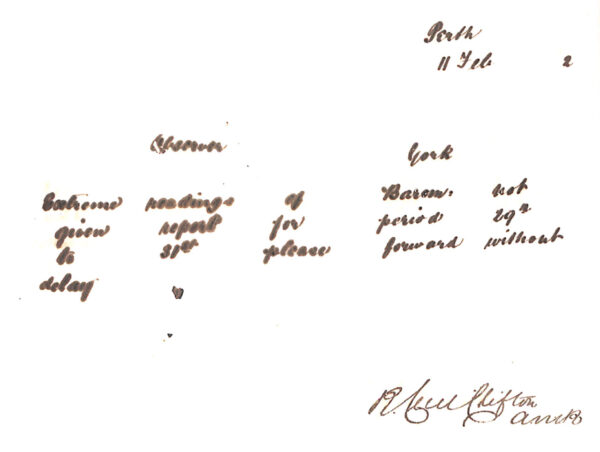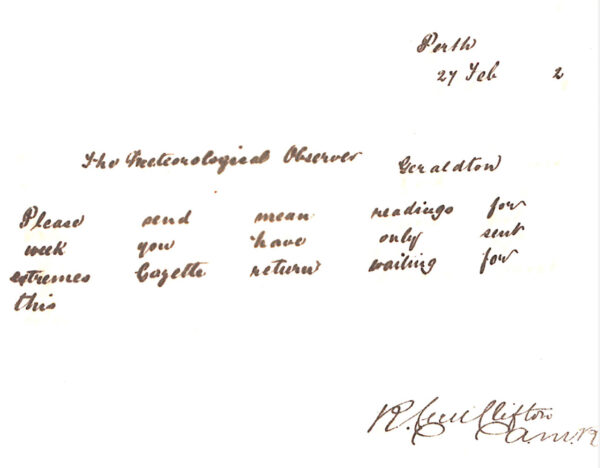From the Historians Desk

During my time as the POBS/POVG Historian researching the Perth Observatory’s history, I have come across many artefacts that pre-date the Perth Observatory’s1896 foundation.
How did we end up with a photographic glass plate from 1882 when the Astrographic telescope did not arrive until 1899?
How did we end up with photographic glass plates of Comet Gale from the Cape Observatory?
How did we end up with a telescope from the 1880s in England, then Queensland, then Mt Stromlo, Mt Bignar and responsible for the location of Siding Springs and finally, the University of Western Australia
How did we end up with Meteorological books and a Day Book from the WA Lands and Survey Department
Over the coming week’s I’ll hopefully enlighten you.
As you all know, the Perth Observatory formally dates back to September 1896, so, how do we have records from 1882 as a starter?
In the beginning, daily activities, finances and communications of the Perth Observatory were recorded in wonderful leather-bound books called ‘Day Books’ or ‘Letter Books’ for most Government Departments like this one.
During a recent scanning project, I came across a Day Book from 1882? So, how? Why?
The Perth Observatory was formed off the back of the Survey Office in 1829 when initially we were the Swan River Colony and later Perth City. The Survey Office changed over the years to end up today as Landgate. However, from April 1828 onwards it recorded meteorological readings for the State as part of its duties. As the requirements of surveying increased and complaints were registered by WA residents regarding meteorological reports and predictions, the then WA Crown Lands and Surveys Department formed a dedicated Meteorological Branch in 1873 which carried on until the Perth Observatory took over the metrological role in 1896.
The first scan shows one of the pages for the meteorological outstation of Geraldton WA, by 1903 we had 45 towns recording the weather. The writing appear smeared, see second scan, but are result of the use of highly corrosive Iron Gall ink on the paper making reading sometimes impossible. My next job is to look into improving the readability of the images. The signature is Mr Robert Cecil Clifton, Chief Clerk for the WA Lands Department in 1880 and Under Secretary in 1891 until retirement in 1918.
This book is the only copy!
Leather, book binding, gold leaf, hand made paper, the smell, Arh!

|

| |
Stay tuned for the next instalment of “…how did we end up with this…”.





